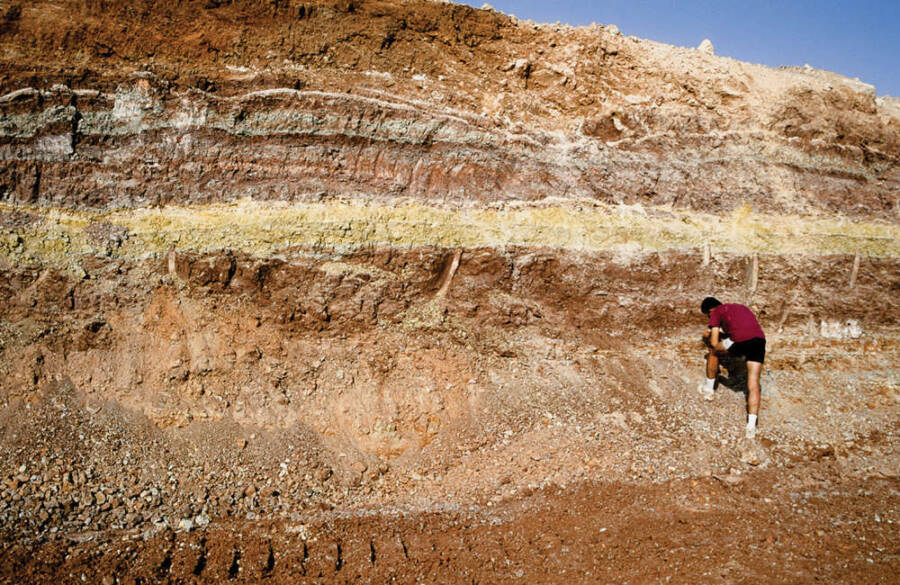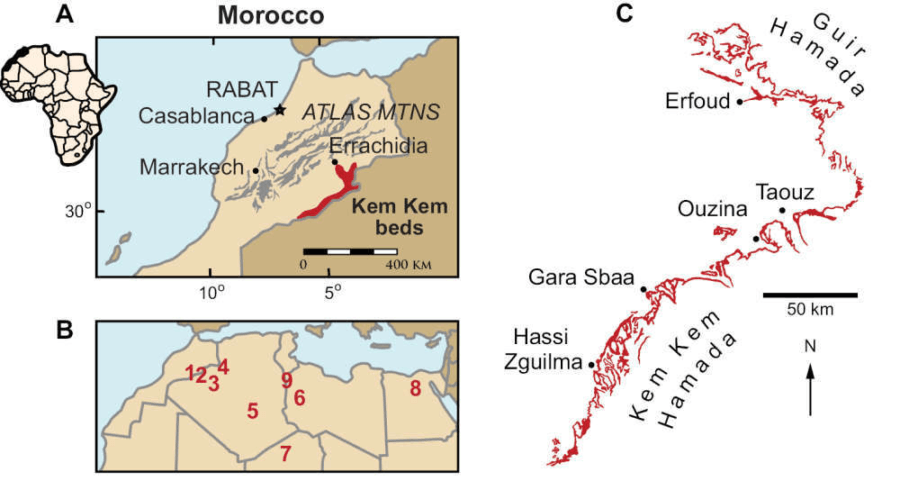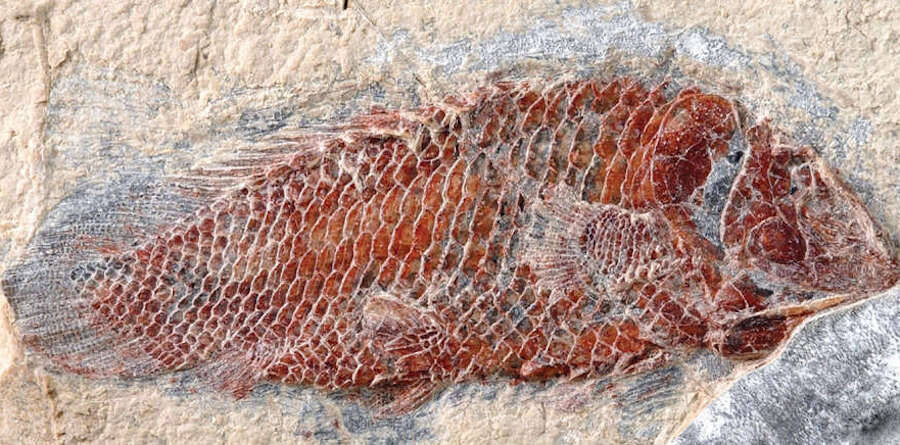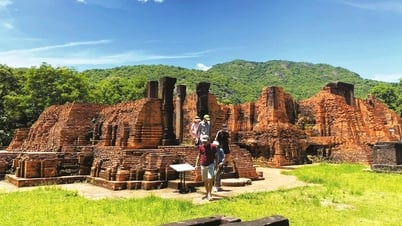According to their research, at this time, the Sahara was not the hot sand desert like today, but an ecosystem full of giant and dangerous creatures. If there was a chance to go back in time, surely no one would want to set foot here.
“A human time traveller would not survive long” if he returned to the Sahara of that era, said Dr Nizar Ibrahim from the University of Detroit Mercy, who led the study. The land was teeming with giant reptiles that soared in the skies and crocodile-like animals that roamed the land. The team’s research, published in the journal ZooKeys, is described as “the most comprehensive work on fossil vertebrates from the Sahara in nearly a century”.

About 100 million years ago, when dinosaurs roamed the Earth, the Sahara Desert was a very different place. Instead of the scorching sands it is today, it was a humid tropical rainforest teeming with life. But it was not a pleasant place to live.
Scientists conducted extensive research based on fossil specimens collected decades ago from museums around the world, along with expedition notes from the Kem Kem Formation in Africa. The formation, a Cretaceous-era rock formation in Morocco, is known for its abundance of large carnivore fossils. The University of Portsmouth describes it as “the first fully detailed and illustrated fossil-rich cliff formation”.
A time traveler to the Kem Kem Formation would encounter at least three of the largest predatory dinosaurs ever recorded. Among them was Carcharodontosaurus, a dinosaur with teeth up to eight inches long and measuring about 26 feet. There was also Deltadromeus, a velociraptor that was about the same length. But that’s not all: the region was home to giant reptiles that soared in the sky, crocodile-like predators, and terrifying aquatic creatures that roamed the vast river systems.

The Sahara was home to giant carnivorous dinosaurs like Carcharodontosaurus and Deltadromeus, with their sharp teeth and massive bodies, as well as meat-eating flying lizards and crocodile-like predators.
The area also contained a rich and diverse underwater ecosystem, said Professor David Martill from the University of Portsmouth. Giant fish such as coelacanths and lungfish once lived here. For example, the coelacanth of this period could be four to five times larger than the coelacanth of today. One notable species was Onchopristis, a giant freshwater saw shark with sharp, dagger-like teeth. These teeth were not only terrifying but also shiny, creating a strange and dangerous beauty.

Despite its abundance of water, the humid tropical forest environment is also fraught with danger. Dense forests and vast rivers provide a breeding ground for dangerous animals.
The Kem Kem Formation is not just a hotbed of giant carnivores, it also provides a glimpse into the biodiversity of Africa during the Cretaceous period. It is a goldmine for paleontologists, with fossils of turtles, fish, and even plants. According to reports from Eureka Alert , the Kem Kem Formation consists of two separate formations, Gara Sbaa and Douira, also known as the Kem Kem Group or Kem Kem Beds. Researchers say these ancient rocks provide a valuable window into Africa’s Age of Dinosaurs, claiming that no one could have survived there at the time.

The thriving river systems provide an abundant food source for these predators. Coelacanths, giant lungfish, and many other fish species become easy prey for these top predators.
This new study marks the first major step forward in the discovery of vertebrate fossils in the Sahara since 1936, when the renowned German paleontologist Ernst Freiherr Stromer von Reichenbach published his study of dinosaurs in the region. Hopefully, the gap between major studies will be shorter, allowing us to continue to expand our understanding of one of the most dangerous places in Earth’s history.
The Sahara 100 million years ago was not the desert it is today, but a land filled with giant and dangerous creatures. The Kem Kem Formation here has provided us with an insight into a tumultuous period in the planet’s history. These discoveries not only shed light on Earth’s past, but also remind us of the harshness and ferocity of nature throughout history.
Source: https://giadinh.suckhoedoisong.vn/dau-la-noi-nguy-hiem-nhat-trong-lich-su-trai-dat-172240904071614285.htm


![[Photo] Prime Minister Pham Minh Chinh chairs a special Government meeting on the arrangement of administrative units at all levels.](https://vphoto.vietnam.vn/thumb/1200x675/vietnam/resource/IMAGE/2025/5/9/6a22e6a997424870abfb39817bb9bb6c)


![[Photo] Russian military power on display at parade celebrating 80 years of victory over fascism](https://vphoto.vietnam.vn/thumb/1200x675/vietnam/resource/IMAGE/2025/5/9/ce054c3a71b74b1da3be310973aebcfd)
![[Photo] General Secretary To Lam and international leaders attend the parade celebrating the 80th anniversary of the victory over fascism in Russia](https://vphoto.vietnam.vn/thumb/1200x675/vietnam/resource/IMAGE/2025/5/9/4ec77ed7629a45c79d6e8aa952f20dd3)

















![[Photo] Magical moment of double five-colored clouds on Ba Den mountain on the day of the Buddha's relic procession](https://vphoto.vietnam.vn/thumb/1200x675/vietnam/resource/IMAGE/2025/5/9/7a710556965c413397f9e38ac9708d2f)
































































Comment (0)